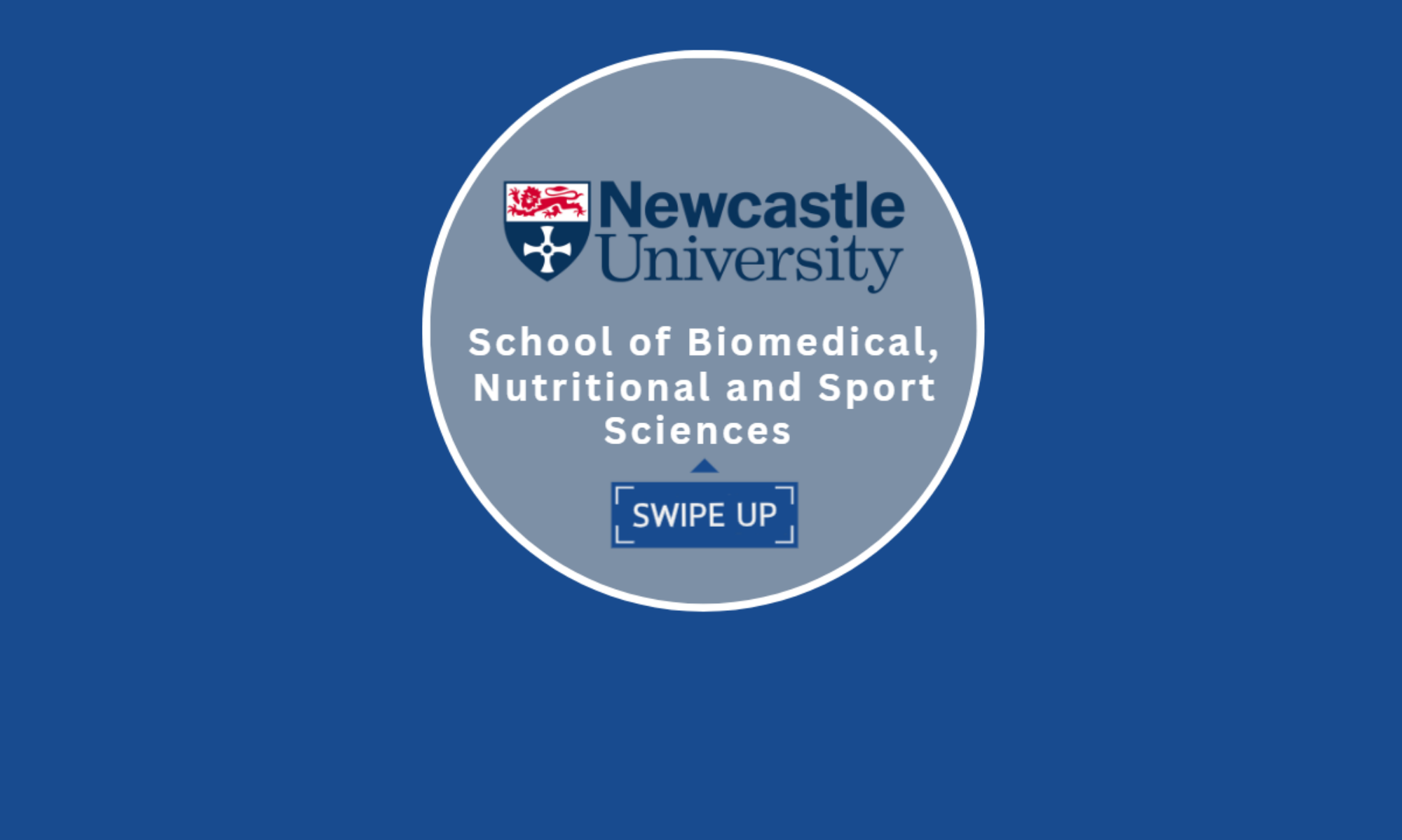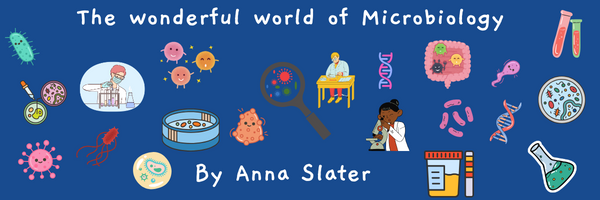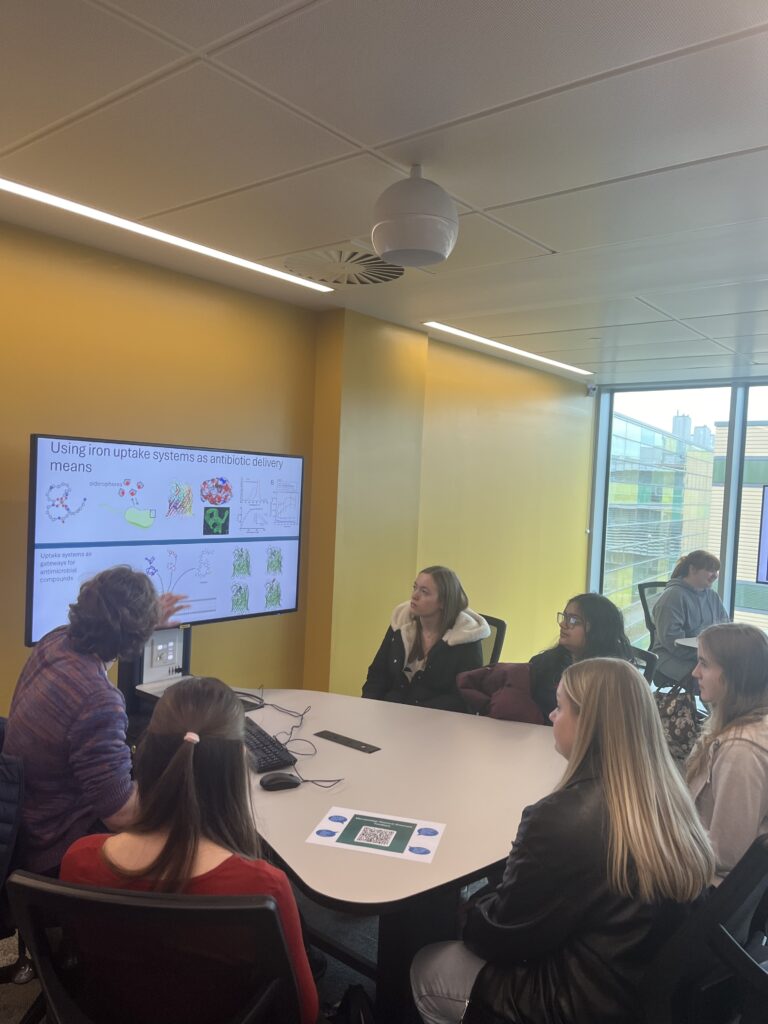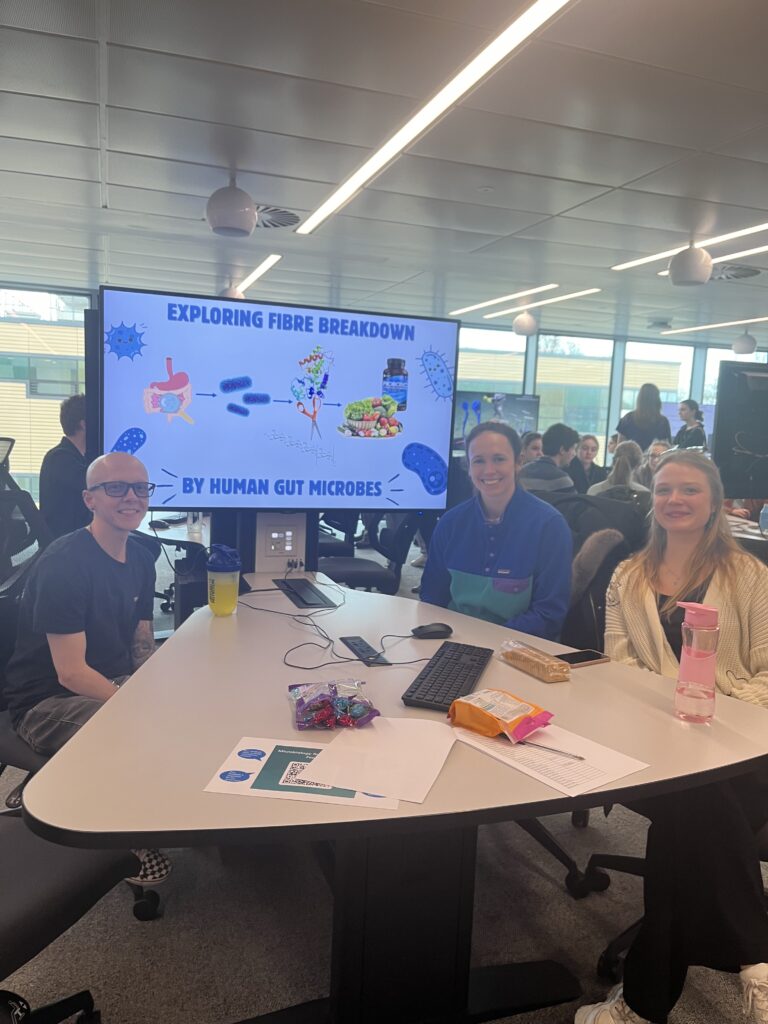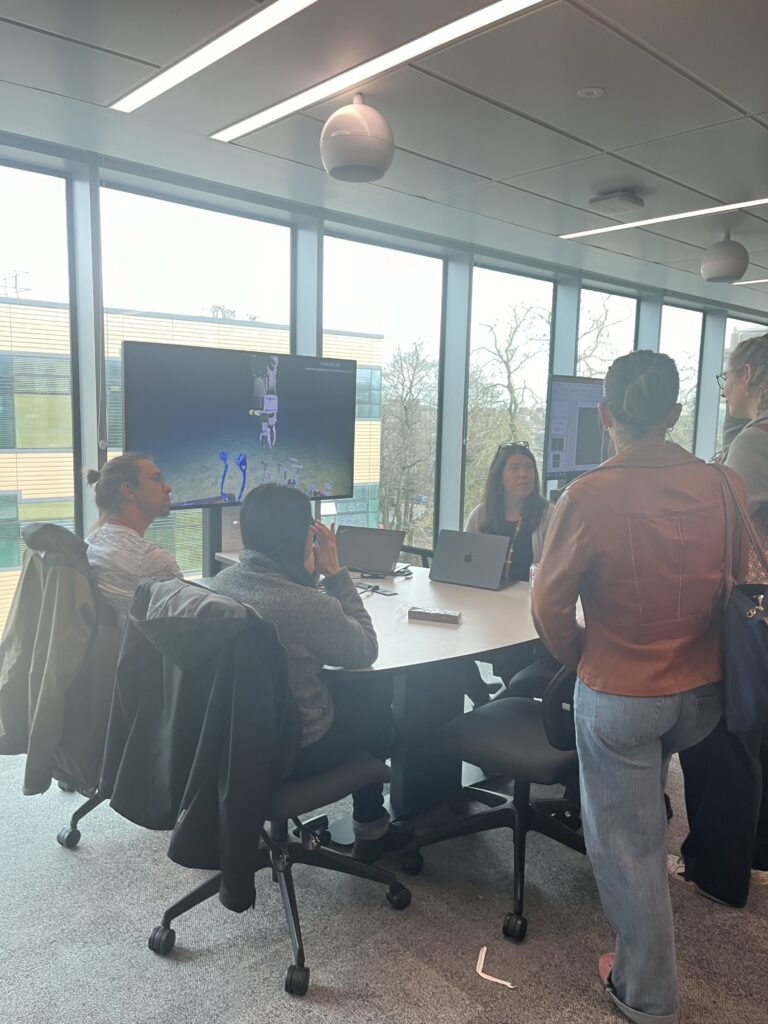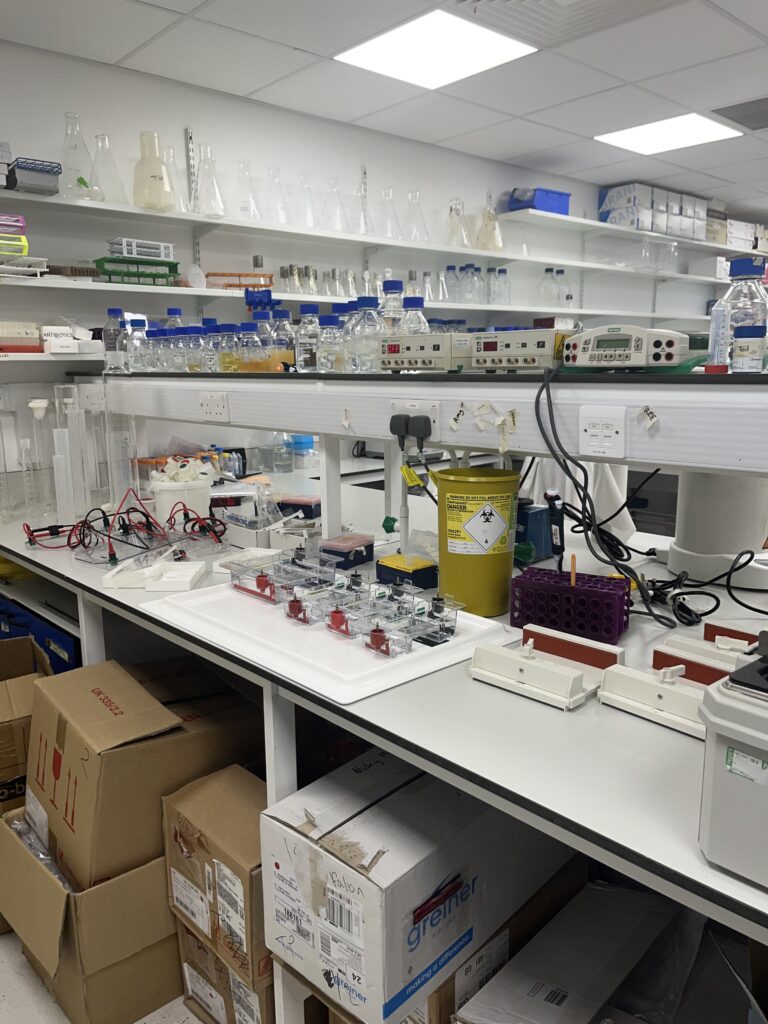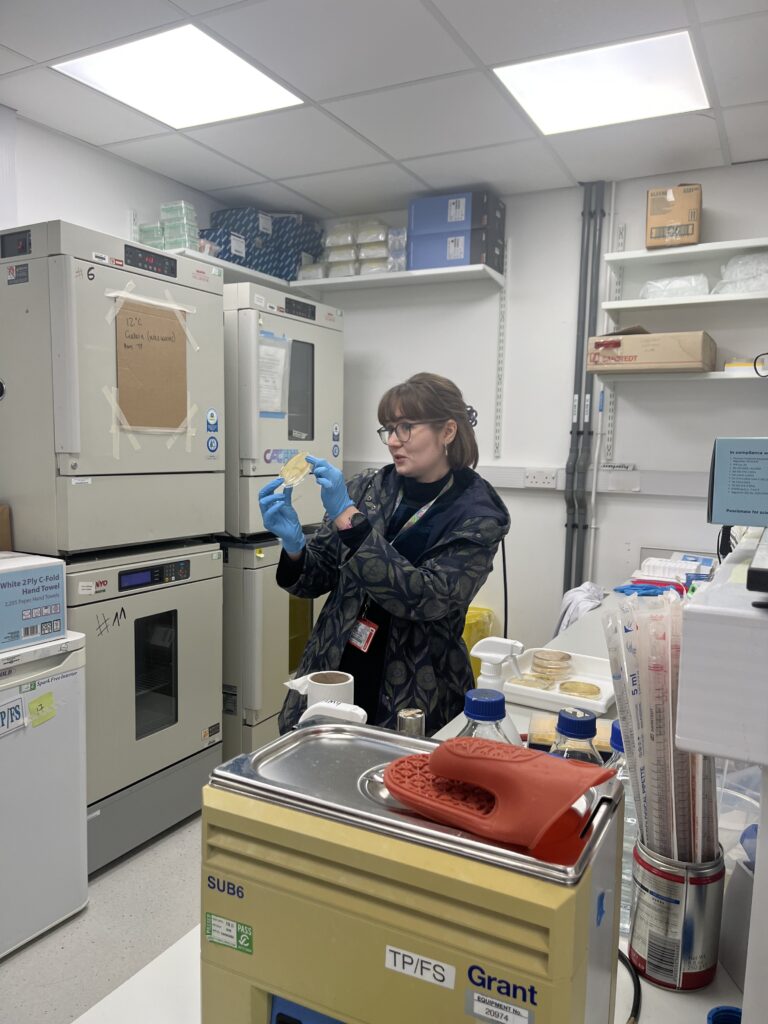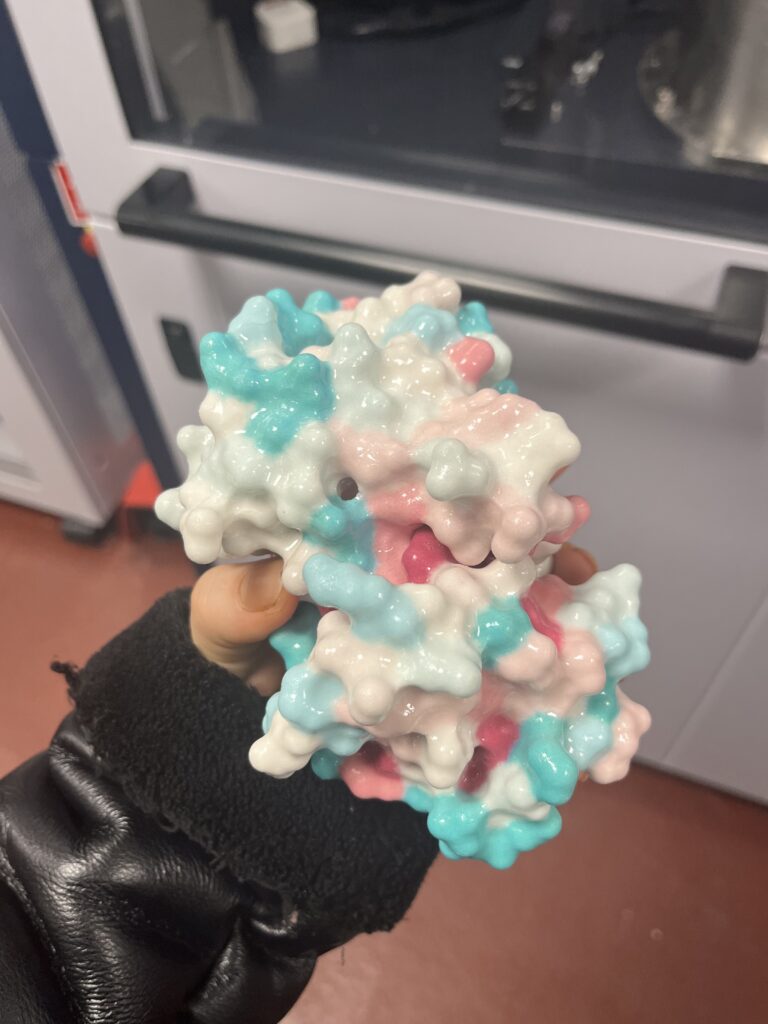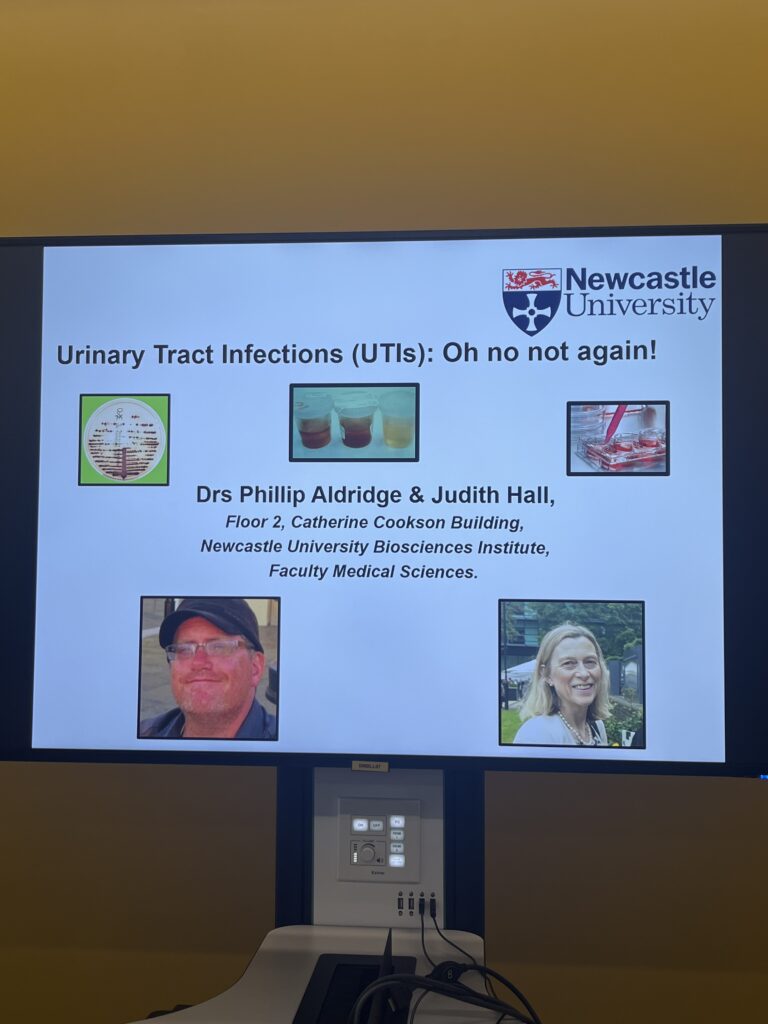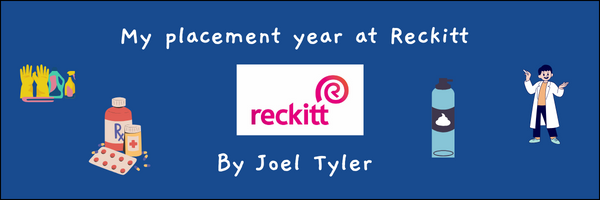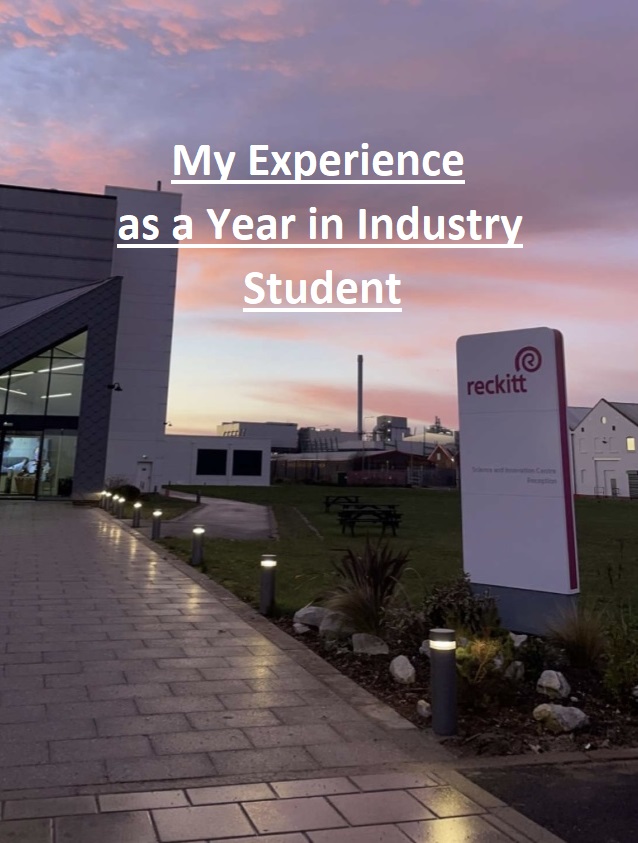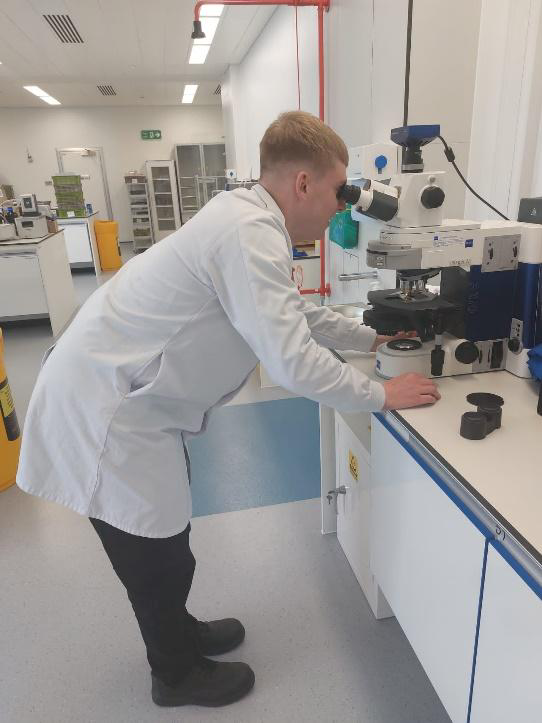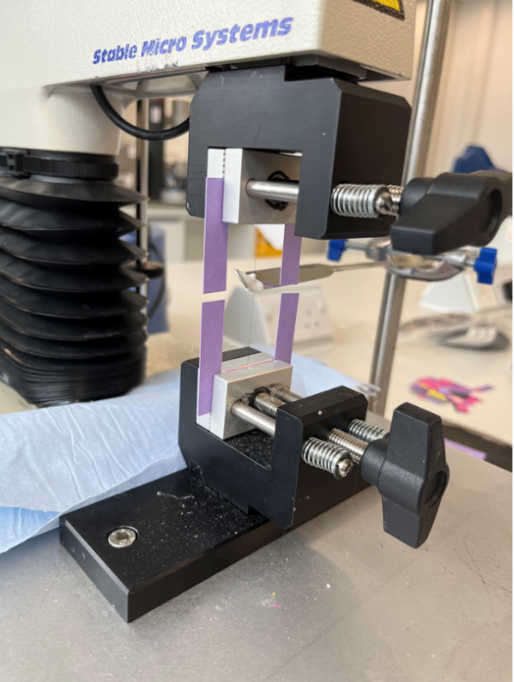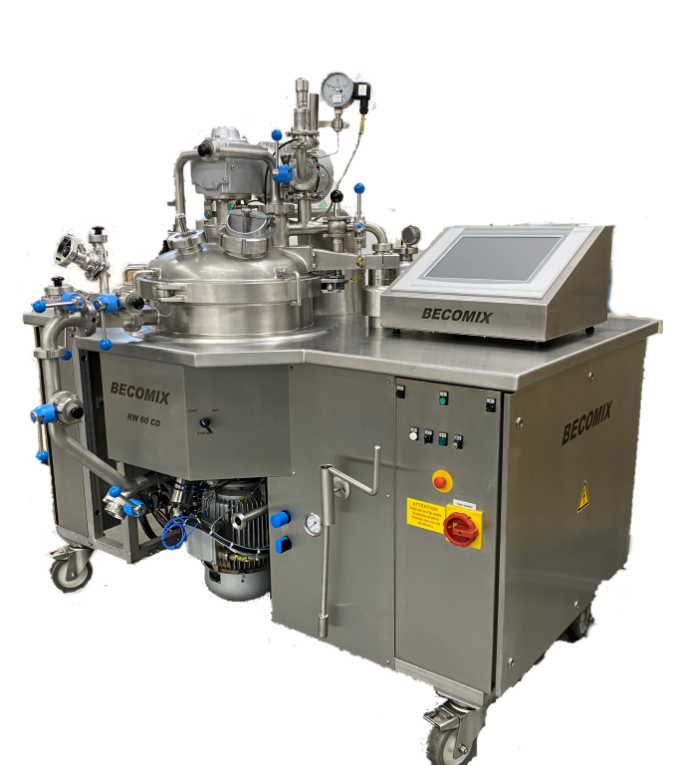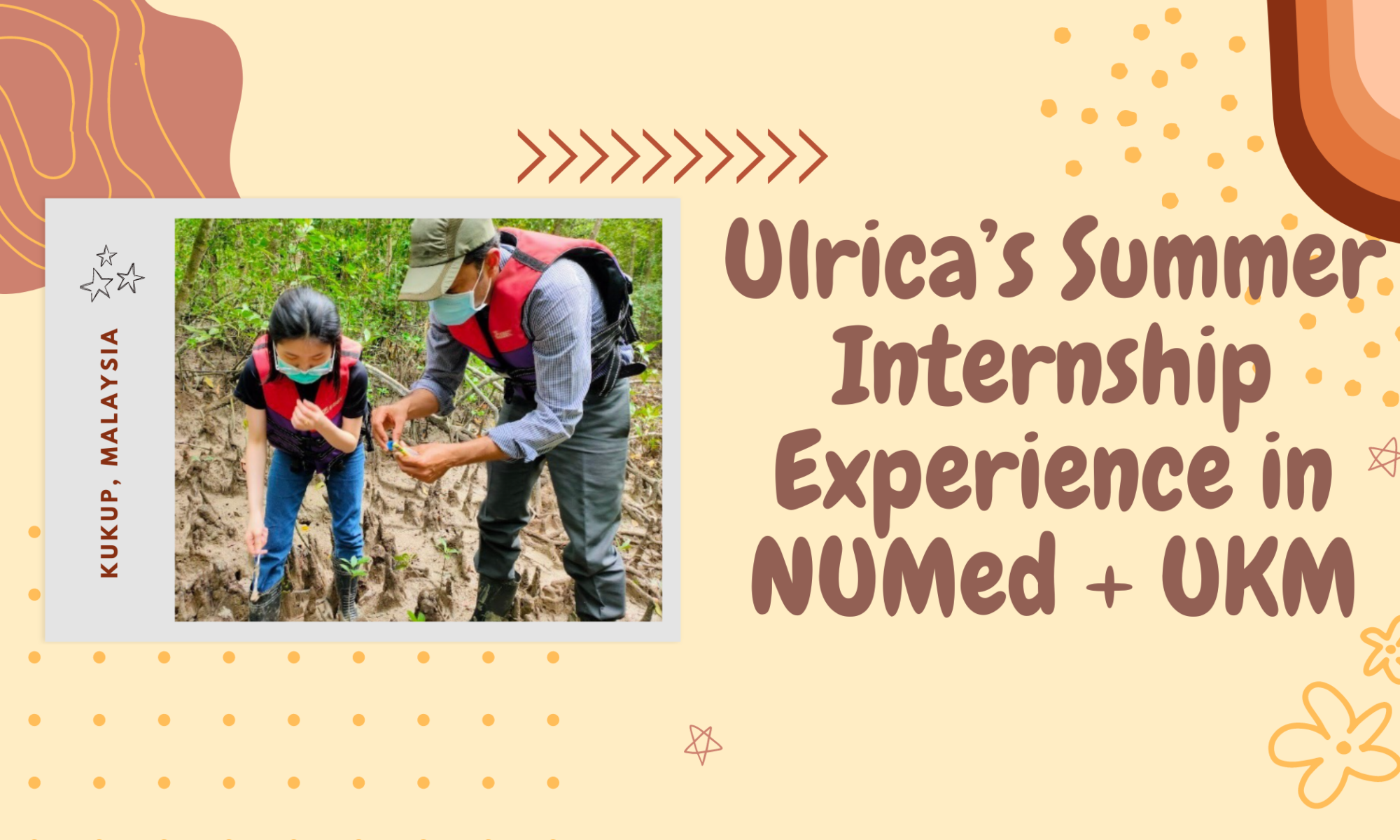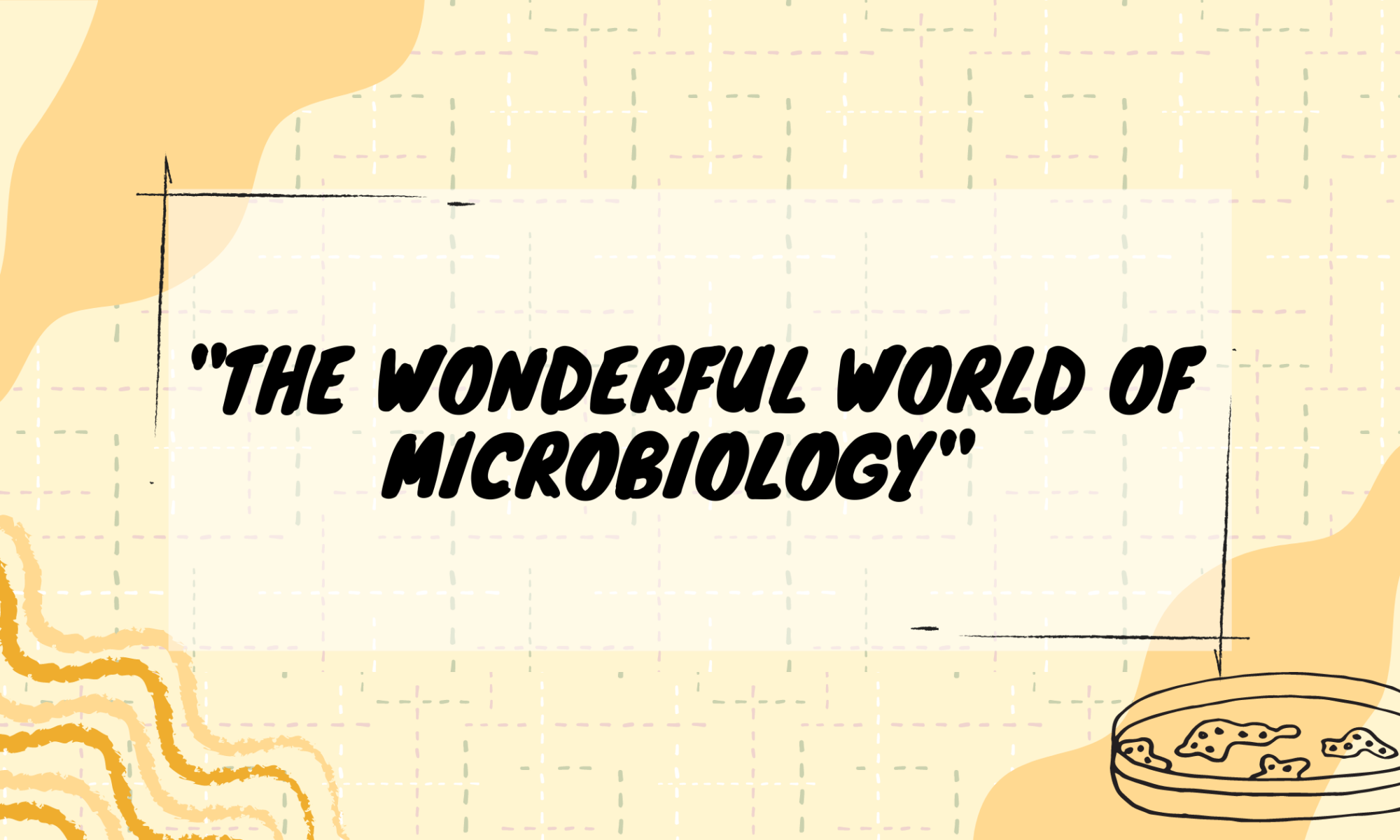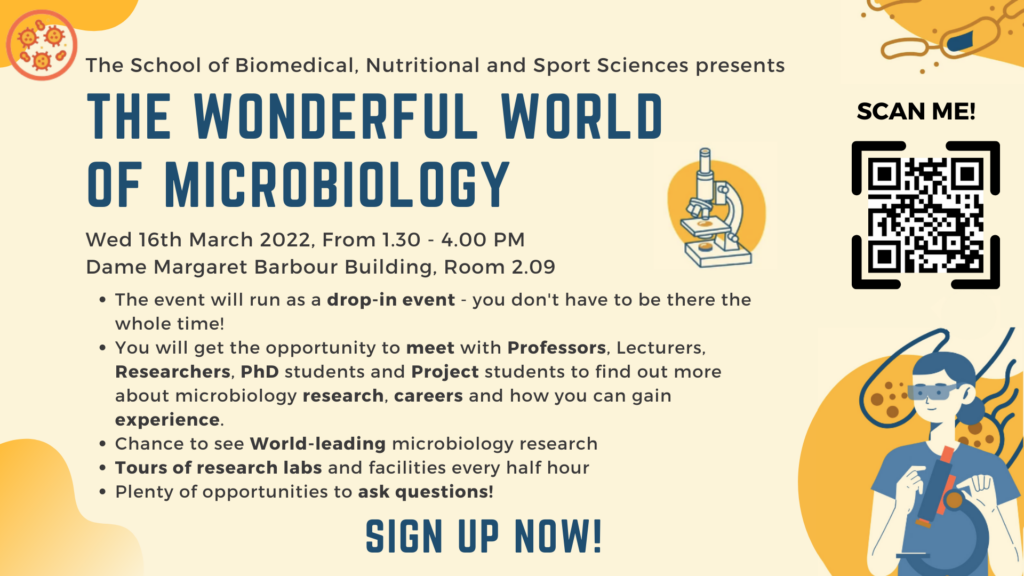By Laura Butler, BSc Biomedical Sciences with Professional Placement Year
For my placement year, I spent 12 months working for GlaxoSmithKline (GSK) at their Stevenage site.
I was part of the Respiratory, Immunology and Inflammation Research Unit, who focus on developing medicines for immune-driven diseases including asthma, chronic obstructive pulmonary disease, systemic lupus erythematosus (or just ‘lupus’), and other inflammatory diseases. I worked within the biology team of this research unit, who perform experiments to aid in the pre-clinical development of drugs. I really enjoyed working within the biology unit, as it was clear to see how my research contributed to the drug discovery process, and how it could potentially help patients in the future.
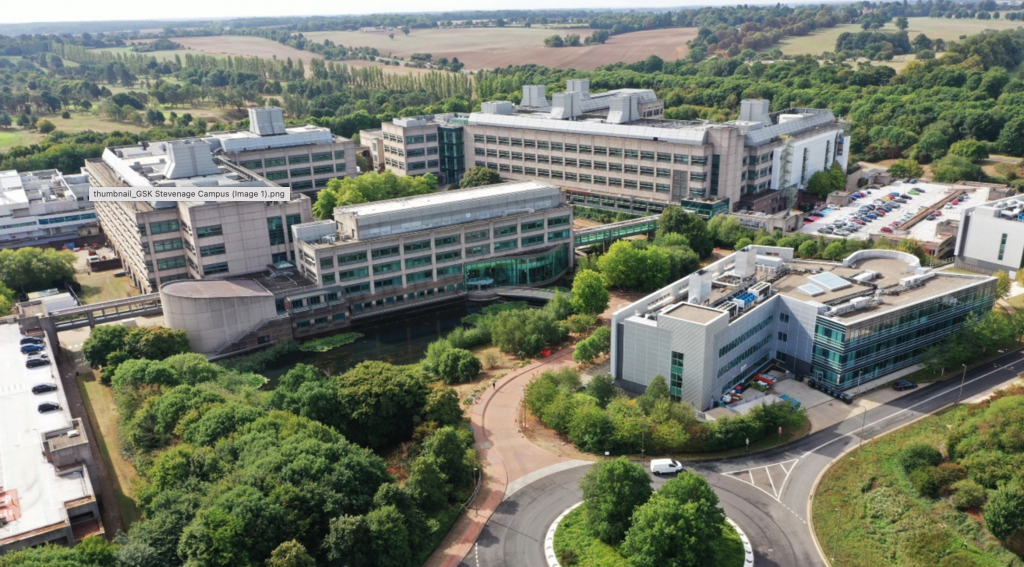
GSK’s Stevenage Campus – home to about 90 placement students each year.
Day to Day
I usually spent a couple of hours in the lab performing experiments each day. I was supervised in the lab during my first month, but then I was able to work independently. I was involved in multiple different projects during my time at GSK, so I learnt a range of lab techniques including cell culture, ELISA (enzyme-linked immunosorbent assay), qPCR (quantitative polymerase chain reaction), and spectral flow cytometry. I also learnt how to design experiments, and to troubleshoot when things go wrong.

These are some of the machines I used on my placement. Left to right: Sony ID7000 spectral analyser, Cytek Aurora, and the Quant Studio 7 Pro.
Outside of the lab, I analysed the data from my experiments so I learnt how to use multiple data analysis softwares. I then wrote up the method, results, and conclusions of my experiments so the company keep a record of them. I also attended team meetings, where I would often present my results to colleagues from across the company. I now feel much more confident presenting my work and my presentation skills have improved massively. I also attended seminars to learn more about work going on outside my project.
Adjusting to working a 9-5 job was a big change because I was used to the flexible timetable of university. However, the placement 9-5 meant I could enjoy my evenings, weekends, and holidays without feeling guilty about not doing university work which I really liked. I also really enjoyed designing my own experiments and not knowing the outcome, which I haven’t been able to do at university yet.
Volunteering
Whilst working for GSK, I participated in the Leaders in STEM program, which involved running weekly sessions for year 12 students at a local school. I worked with other placement students to deliver several sessions about STEM topics, such as bioinformatics, drug discovery, STEM careers, and genetics, and we also ran several practicals.
The students then planned a presentation on a topic of their choice which they delivered at a symposium at the GSK site to students from other schools. We delivered sessions on presentation skills, referencing, and how to find reliable sources to help them plan this presentation, and then they delivered it in front of us and we provided feedback. This experience helped me feel more confident mentoring and teaching other people, and it was a very rewarding experience.
Life on Placement
Outside of the lab, I also helped organise a Christmas quiz for my team alongside the other placement students which was really fun and our team enjoyed it!
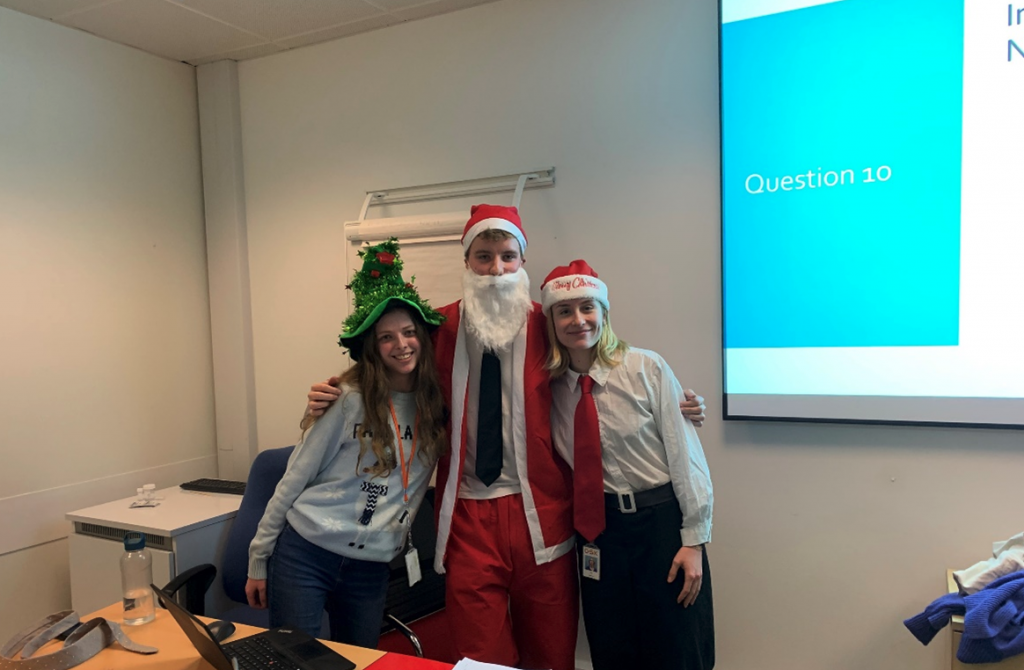
Picture taken at the Christmas quiz. Pictured left to right: Laura Butler, Nathan Whitty, Vera Kjellberg.
The placement student committee organised pub quizzes, a ball at the Gherkin in London, and a boat party. There are about 90 placement students at the Stevenage site so I still felt that I had a student community whilst on placement. Stevenage is well-connected with cities such as London and Cambridge, so me and the friends I made on placement were able to go to Thorpe park, Kew Gardens, the theatre in London, punting in Cambridge etc.

Pictures from visits to (clockwise from top left): Thorpe Park, Notting Hill, Tower Bridge and the Houses of Parliament.
Advice
I was nervous leading up to my interview for this placement year, so I wrote out answers to common interview questions using the STAR technique and I practiced them, and did some research on GSK and the immunology drugs they have on the market. I also did a practice interview with Dr Beth Lawry, one of the academic placement officers. The preparation I did and the practice interview really helped me in my real interview.
I am very thankful for this experience and have really enjoyed my placement year. I would like to continue working in the lab after university so the skills I have learnt during my placement will be really valuable. I have learnt a lot about the pharmaceutical industry, and my colleagues have been very supportive and have given me some very useful career advice. I would really recommend a placement year to anyone considering one!
